Advertisements
Advertisements
Question
In the given figure, AD is the bisector of the exterior ∠A of ∆ABC. Seg AD intersects the side BC produced in D. Prove that :
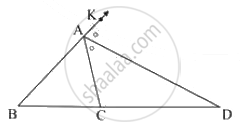
Solution
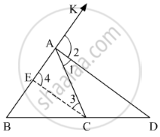
Given:
- In ∆ABC, AD is the bisector of the exterior ∠A.
- AD meets the extended side BC at D.
- We need to prove that:
`(BD)/(CD)=(AB)/(AC)`
Since AD is the bisector of ∠A’s exterior angle, it creates two equal angles: ∠BAD = ∠CAD
Also, from the given figure, we can see that: ∠ABD = ∠ACD
Proving the Triangles are Similar
From ∆ABD and ∆ACD, we can observe that:
- ∠BAD = ∠CAD (Given, since AD is an exterior angle bisector)
- ∠ABD = ∠ACD (Vertically opposite angles)
Since ∆ABD ∼ ∆ACD, we know that the corresponding sides of similar triangles are in the same ratio: `(BD)/(CD) = (AB)/(AC)`
Since we have proved that:
`(BD)/(CD) = (AB)/(AC)`
this means that the exterior angle bisector divides the extended side in the same ratio as the other two sides of the triangle.
APPEARS IN
RELATED QUESTIONS
In the following figure RP: PK= 3:2, then find the value of A(ΔTRP):A(ΔTPK).

Base of a triangle is 9 and height is 5. Base of another triangle is 10 and height is 6. Find the ratio of areas of these triangles.
Ratio of areas of two triangles with equal heights is 2 : 3. If base of the smaller triangle is 6 cm then what is the corresponding base of the bigger triangle ?
In the given figure, ∠ABC = ∠DCB = 90° AB = 6, DC = 8 then `("A(Δ ABC)")/("A(Δ DCB)")` = ?
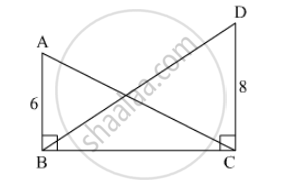
In the figure, PM = 10 cm, A(∆PQS) = 100 sq.cm, A(∆QRS) = 110 sq. cm, then find NR.
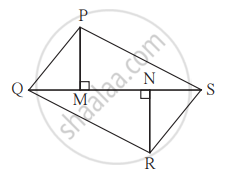
In ∆ABC, B – D – C and BD = 7, BC = 20, then find the following ratio.
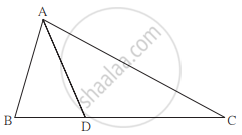
`(A(∆ABD))/(A(∆ABC))`
If ΔXYZ ~ ΔPQR then `"XY"/"PQ" = "YZ"/"QR"` = ?
In fig., TP = 10 cm, PS = 6 cm. `"A(ΔRTP)"/"A(ΔRPS)"` = ?
Ratio of corresponding sides of two similar triangles is 4:7, then find the ratio of their areas = ?
From adjoining figure, ∠ABC = 90°, ∠DCB = 90°, AB = 6, DC = 8, then `("A"(Δ"ABC"))/("A"(Δ"BCD"))` = ?

In ΔABC, B − D − C and BD = 7, BC = 20, then find the following ratio.
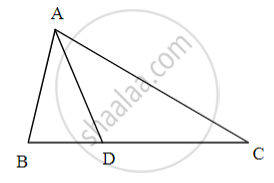
(i) `"A(ΔABD)"/"A(ΔADC)"`
(ii) `"A(ΔABD)"/"A(ΔABC)"`
(iii) `"A(ΔADC)"/"A(ΔABC)"`
Prove that, The areas of two triangles with the same height are in proportion to their corresponding bases. To prove this theorem start as follows:
- Draw two triangles, give the names of all points, and show heights.
- Write 'Given' and 'To prove' from the figure drawn.
If ΔABC ∼ ΔDEF, length of side AB is 9 cm and length of side DE is 12 cm, then find the ratio of their corresponding areas.
In the figure, PQ ⊥ BC, AD ⊥ BC. To find the ratio of A(ΔPQB) and A(ΔPBC), complete the following activity.
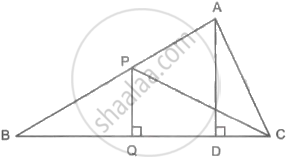
Given: PQ ⊥ BC, AD ⊥ BC
Now, A(ΔPQB) = `1/2 xx square xx square`
A(ΔPBC) = `1/2 xx square xx square`
Therefore,
`(A(ΔPQB))/(A(ΔPBC)) = (1/2 xx square xx square)/(1/2 xx square xx square)`
= `square/square`
